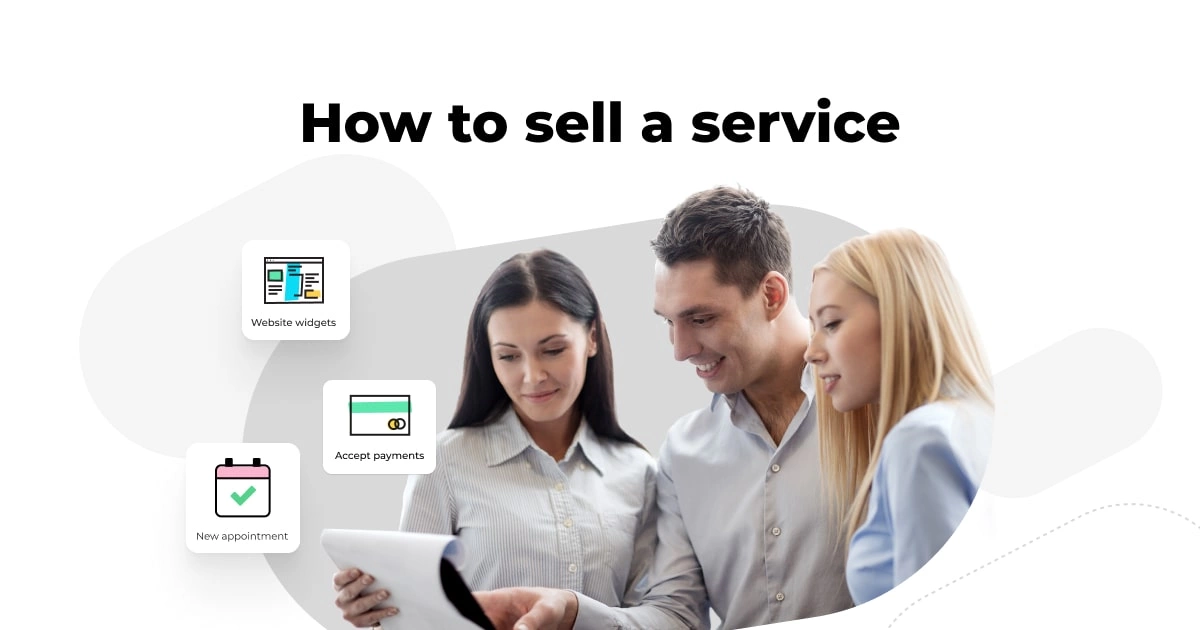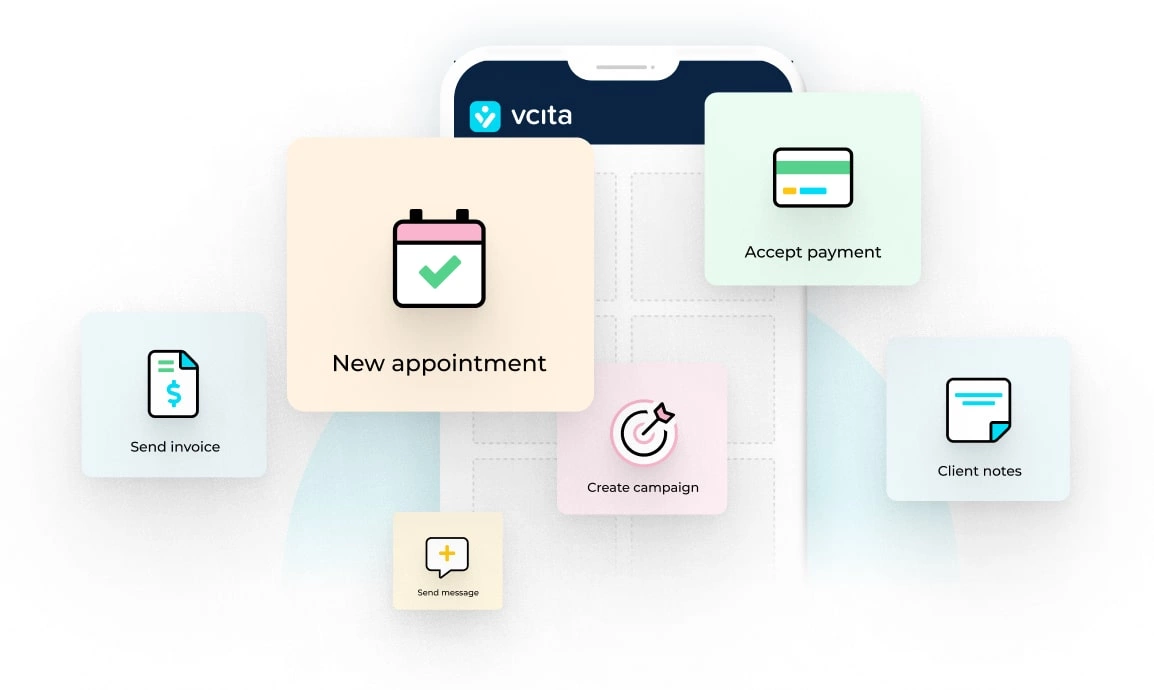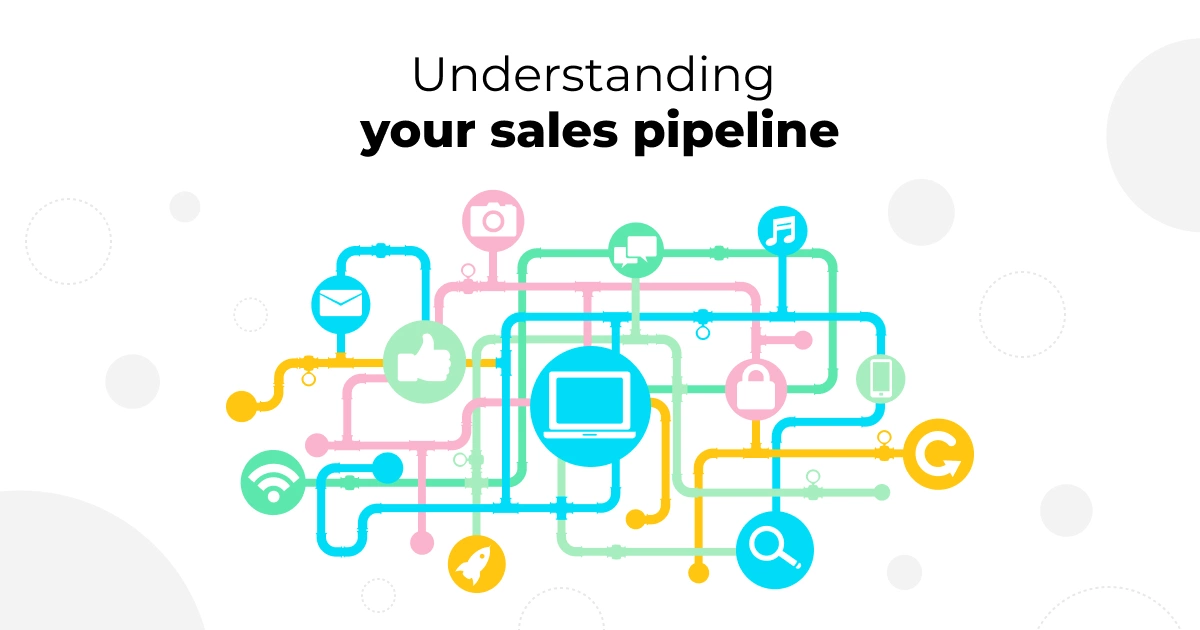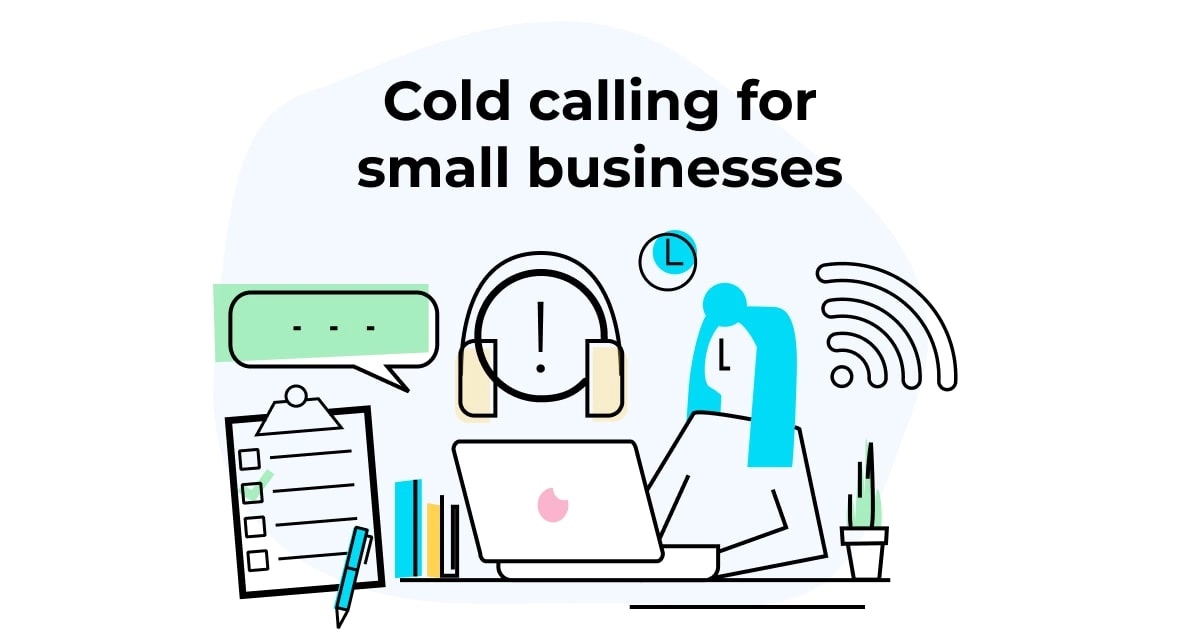At first, selling a service may seem simple – create a service, market it, and provide it to inquiring clients. However, during that second step, people tend to find that the sales process is not as simple as it sounds. Determining the best way to sell a service is a nuanced process, especially if you’re determining how to sell your services online.
The science behind selling a service is based on psychology, communication, negotiation, and a number of other skills. With education and experience, these skills can be refined to perfect how you sell a new service. We explain the concepts required to build your sales strategy below, so read on to take a big step toward your next successful sale.
The psychology of selling
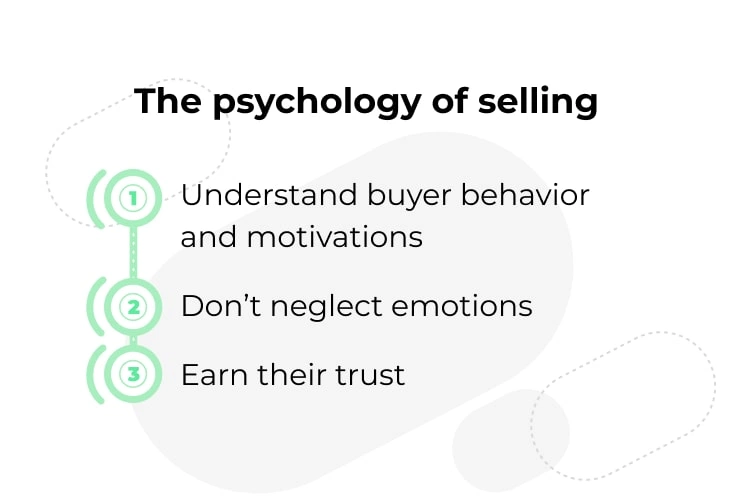
How do you sell a service successfully? Well, to close a sale, buyers have to make a decision. This decision-making process is influenced by a number of psychological factors that can work in your favor if you know what to look for.
Understanding buyer behavior and motivations
Motivating factors determine a person’s behavior. For example, a person motivated by hunger will likely take actions that result in satisfying their hunger. The same is true for sales. A person in need of transportation will be more motivated to take action resulting in purchasing a car or bike compared to someone who does not have the same need.
When you understand your audience’s motivations, you can better predict their behavior. This allows you to direct your selling efforts toward individuals who are most motivated to obtain your service or product. After all, they are most likely to take action and make a purchase.
Understanding motivating factors also allows you to find the right approach to them. If prospects don’t have a pre-existing need that is urging them to make a purchase, effective advertising strategies can create motivation. This can be done by showing individuals how their purchase will improve their quality of life or help them reach personal goals.
The role of emotions in sales
When you’re determining how to sell a service, emotions can’t be neglected. They should be an important factor in your overall sales and customer experience strategy. As highly social creatures, humans are emotionally charged. Having a product or service evoke a certain ‘feel’ can influence a person’s behavior.
Depending on their values, experiences, and culture, they may place high importance on certain emotions. If a product or service can help them experience a valued emotion, they are more likely to obtain it.
This can be accomplished subtly or bluntly in a variety of ways. For example, you can ensure every image on your ads and web presence contains happy people if you’re trying to appeal to individuals seeking happiness.
Building rapport and trust with potential clients
When learning how to sell a service to a customer, earning a person’s trust is the first step, especially if they’re difficult clients. This trust can be beneficial in many business relationships, but it is absolutely crucial in sales.
So how can you build trust with potential clients? Studies suggest a person’s willingness to trust a new individual is influenced by a number of factors including culture, but there are common behaviors that build trust.
Sharing information and getting to know each other can generate trust on a personal level. Meanwhile, genuinely listening and practicing transparency in the sales process can build trust from a business perspective. A few compliments, consideration of a person’s opinions, and clear communication are also useful tools in building rapport.
Strategies for effective communication
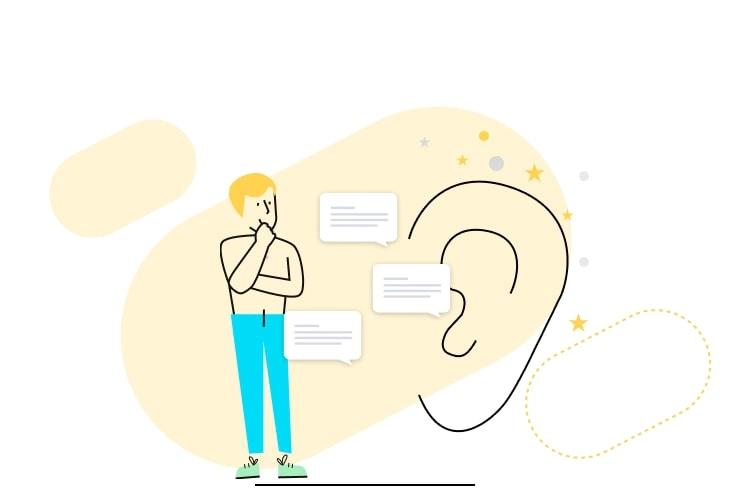
Communication builds trust, clarifies products and services, it even has the power of persuasion when used correctly.
The art of active listening
Effective communication places equal emphasis on speaking and listening. Active listening is the act of listening with the intent of truly understanding what a person means and how they feel. This may seem obvious, but not everyone practices active listening.
Successful active listening requires:
- Minimal distractions
- Allowing the speaker to take their time
- Responding with body language or other cues of engagement without interrupting
- Engaging with clarifying questions
- Picking up on emotions
- Showing respect and appreciation for the information that is shared.
Asking powerful questions to uncover client needs
Active listening opens up opportunities for you to formulate questions that relate back to what you learned from a potential client.
Well-worded questions not only create consideration on the potential customer’s end. They also give you insight into how good of a lead an individual is. Open-ended questions are great, as they may encourage a potential client to share more information without you pushing them to do so.
Closed-ended questions can also help by providing you with exact responses. Among others, these may clarify the cost a customer is expecting or the exact specifications they desire from a product/service.
Crafting compelling sales pitches
Selling a service is almost impossible without a sales pitch. Its goal is to address the target audience and inform them of the benefits provided by a specific product or service.
Sales pitches come in a variety of lengths and styles, but they are most effective when they are customized to your audience. Typically, these speeches are shortened and simplified when your customers are part of the general public. Pitches tend to be more lengthy and intricate when a corporate audience is the intended customer.
Overcoming sales objections
“No” isn’t always a comfortable word, but it is a big part of sales. Becoming accustomed to objections is the best way to overcome this inevitable aspect of sales when you’re learning how to sell a service.
Identifying common objections and how to address them
If you have a few sales worth of experience on a single product, you may already have an idea of the most common objections. Spotting them quickly can help you predict possible hurdles and plan ways around them.
There are four steps that can help you work around roadblocks and address them: listen, understand, respond, and confirm.
When you listen to your potential client and allow them to voice their concern, you may uncover other issues. Encouraging them to be open gives you an opportunity to address all possible worries. It’s good practice to note the most common objections in your client management software, so you can have the answers ready for your next lead encounter.
Next, you must unearth the cause. Prospective clients might not be so forthcoming, either because they feel personal or they don’t know how to put it in wording. Probing questions will be of great assistance here.
Now, it’s time to respond. Address concerns in order of importance and seek to remedy them with reason. If you want your response to be taken seriously, discuss the steps you’ll take to resolve the issue.
Confirm if this outcome works for your potential clients. If needed, repeat these four steps until all concerns have been managed in a way they’re content with.
Dealing with price objections
Pricing a service can be a major challenge. Leads who have tight budgets or expectations of your product being cheaper may disapprove quickly. A person’s quick or sharp reaction does not have to be met with an equally intense response. Instead, respond calmly with questions that help you determine why a lead has price concerns.
Using testimonials and case studies as proof points
People love proof – it helps to take some of the guesswork out of big decisions. Case studies are a great way to resolve concerns from hesitant leads.
Try to put together a variety of case studies so you can refer your potential clients to those that are most relatable to their case. Showing how your client’s concerns were resolved after their purchase or how they felt it was worth the price may help potential clients make a decision.
Negotiation techniques
The sales journey doesn’t end once a lead becomes a client. At this point, many consumers still seek a bargain and negotiation is exactly how to sell a service and seal the deal.
The art of negotiation in closing deals
Even if you have a set price on a product, sales can require some negotiation. A well-navigated sales conversation takes a few things into consideration – your needs, the buyer’s perspective, and flexibility.
Your business objectives should always stay front of mind. Knowing what you need ensures you can make a sale while still making your margins. Considering the customer’s view allows you to stay aware of their pressure points, ensuring that your negotiation methods don’t trigger objections.
Win-win negotiation strategies
Learning how to sell a service with negotiation doesn’t have to be difficult. There are three main pivot points you can use to encourage the customer, without giving up too much control.
The first point is a positive attitude focused on possibilities. Listen to your lead and suggest solutions tailored to their case. This helps maintain trust and gives the person a sense of working towards a common goal.
When requests for compromise overstep abilities or sales standards, be transparent about restrictions. If you have built a strong foundation and good rapport, your lead should respond with the same amount of understanding you have shown them.
If concerns still linger, especially in sales that result in long-term clients, highlight the fact that terms can be re-negotiated in the future. This opportunity for change can be comforting and beneficial to both parties.
Effective techniques for handling objections during negotiations
Objections from earlier or new concerns can arise as you negotiate toward closing a deal. These should always be handled in order of importance, with the biggest obstacle tackled first.
Creating a sense of urgency
Determining how to sell a service to a customer can be particularly hard when they are the pensive type. An indecisive client can drag out the sales process and eat up your time, so here are a few tips for how to sell a service to clients with urgency.
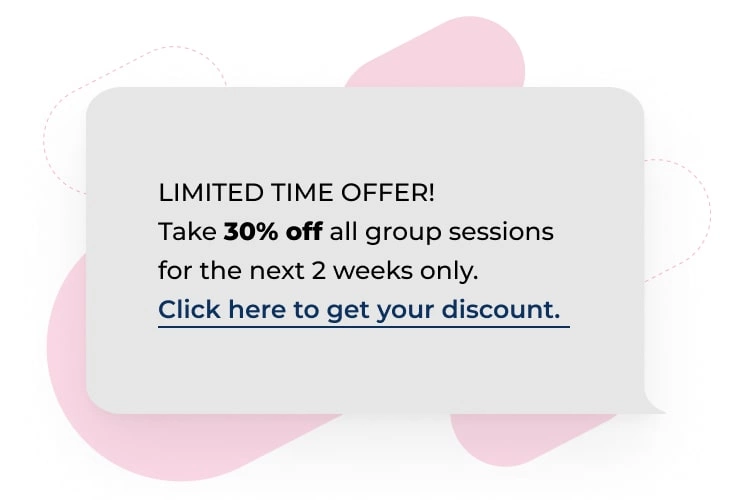
Firstly, use scarcity and time-sensitive offers to close deals. Both of these tactics put clients in a position where they become concerned with what they could lose, and act urgently as a response.
A tight time frame tends to motivate people to overlook questions and reasons for deliberation. In terms of closing a sale, this can be a helpful way to push buyers past objections they were caught up on prior. Just be sure to maintain your rapport and not come off as too pushy.
Implementing effective follow-up strategies to maintain momentum
Persistence is key, even if you’re confident you know how to sell a service. Some products and services don’t reach a sale within the first interaction, but that’s no reason to give up!
Employing assumptive close techniques and scheduling callbacks, along with other effective follow-up strategies, can help maintain the momentum and relationship you worked so hard to build. Some studies suggest that 80% of sales require about five follow-up calls to close. If you aren’t making those calls, you might miss out on that sale.
Leveraging social proof to create urgency
Social proof is any material that suggests others made a similar choice and are happy they did. This form of proof can be especially easy to leverage when you’re determining how to sell online services, as most forms of proof are online.
This ties back into an earlier tactic, using case studies, but it can also include testimonials, popularity on social media, and anything else that suggests a majority enjoy this product.
Social proof doesn’t just reassure clients they are making a good purchase; it also triggers a sense of urgency. As social creatures, people like belonging to groups and feeling included. If the social proof for your product is convincing enough, potential clients will experience an extra urge to make a purchase in an effort to join the majority.
Closing the deal
Determining how to sell your services online or in person can be a difficult task, but with the correct tools, it doesn’t have to be. An understanding of basic psychology, communication, objections, negotiations, and the impact of urgency can drastically improve your business’s ability to finalize sales.
With time and experience, these skills can be refined to create a sales strategy that is customized to your product or service. If something works, explore it further; and if a certain tactic doesn’t work, investigate why. A curious and creative view on selling a service is the best way to keep closing deals.
























